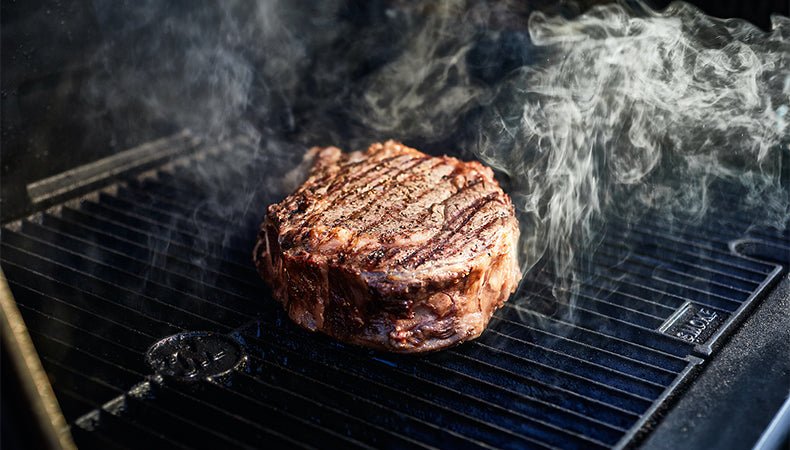Looking to make your next backyard barbecue a sizzling success? Look no further than these top grill master tips for perfectly grilled meats. Whether you’re a seasoned grilling pro or just starting out, these expert tips are sure to take your grilling game to the next level. From prepping your meats to mastering grill temperatures, we’ve got you covered. Get ready to impress your family and friends with mouthwatering, perfectly grilled meats that will have them coming back for seconds (and thirds!).
Choosing the Right Meat
Consider the cut
When it comes to grilling meat, the first step is to consider the cut you want to cook. Different cuts of meat require different cooking methods and techniques. For example, if you’re looking for a tender and juicy steak, you might go for a ribeye or filet mignon. On the other hand, if you’re in the mood for some flavorful and succulent pulled pork, you’ll want to choose a shoulder or butt cut. Understanding the characteristics of each cut and how they cook on the grill will help you make the right choice for your meal.
Select high-quality meat
The quality of the meat you choose will greatly impact the taste and texture of your grilled dish. Look for cuts of meat that are fresh, with vibrant color and minimal fat. It’s also important to consider the source of the meat. Opting for high-quality, organic, or locally sourced meat can make a significant difference in flavor. When picking out your meat, try to find cuts with marbling – small streaks of fat throughout the muscle – as this will add moisture and flavor to the final result.
Choose the right thickness
Finding the right thickness in your cut of meat is essential for achieving that perfect balance between a charred exterior and a juicy interior. Thinner cuts, like chicken breasts or fish fillets, will cook quickly, requiring a shorter grilling time to avoid drying out. Thicker cuts, such as a bone-in ribeye or a pork chop, will benefit from a longer cooking time to ensure the interior is cooked to the desired level of doneness. Consider the cooking time and ensure the thickness of your meat aligns with your desired taste and texture.
Preparing the Meat
Let the meat reach room temperature
Before throwing your meat on the grill, allow it to come to room temperature. This step is crucial because it ensures more even cooking. If you place cold meat on a hot grill, it will take longer to cook, resulting in an unevenly cooked piece of meat. By giving it time to reach room temperature, you’ll achieve a beautiful sear on the outside while maintaining a juicy center.
Marinate for flavor
Marinating your meat is an excellent way to infuse it with flavor and moisture. Whether you opt for a simple marinade of oil, garlic, and herbs, or a more complex mixture with soy sauce, ginger, and citrus, marinating can take your grilled meats to the next level. It’s best to marinate the meat for at least 30 minutes, but overnight marinating can truly intensify the flavors.
Season generously with salt and pepper
Salt and pepper may seem like basic seasonings, but they are essential in enhancing the natural flavors of the meat. Before grilling, generously season your meat with a mixture of salt and pepper. This step will create a flavorful crust and bring out the best in your grilled meats.
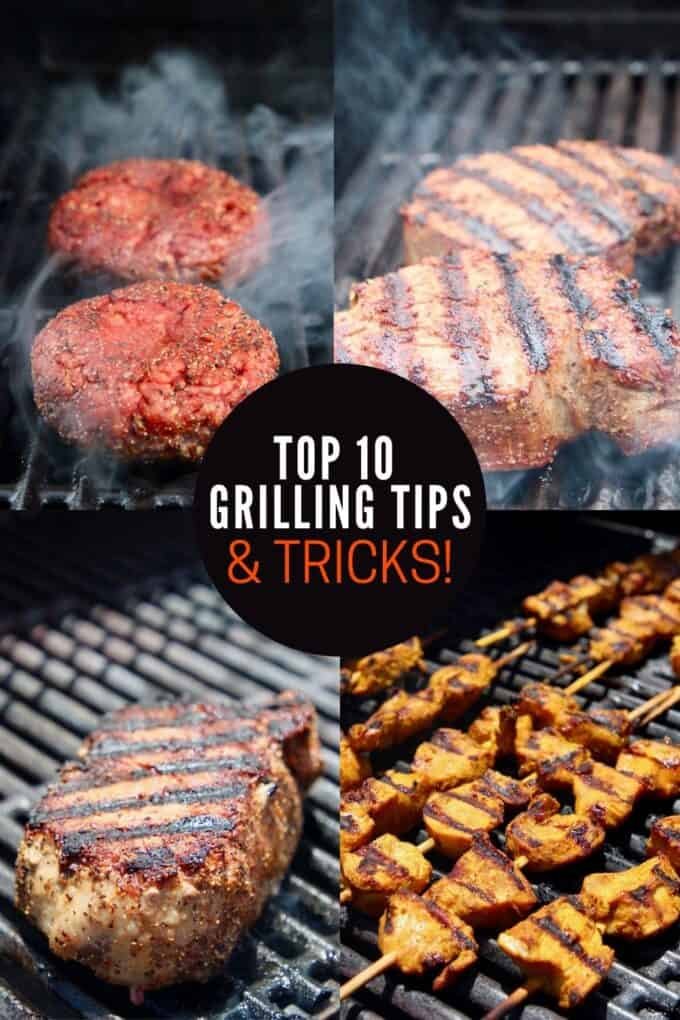
Preheating the Grill
Clean the grill grates
Before every grilling session, it’s important to clean the grill grates thoroughly. Build-up of grease, residue, and charred bits can affect the flavor of your food and even cause flare-ups. Use a grill brush to scrape off any debris from previous cooking sessions. For a deeper clean, you can also preheat the grill and then scrub the grates with a ball of aluminum foil. Keeping your grill grates clean will ensure even heat distribution and prevent any unwanted flavors from transferring to your food.
Preheat the grill to the right temperature
Preheating your grill is a crucial step in achieving perfectly grilled meats. It allows the grates to reach the desired temperature, ensuring good sear marks and preventing sticking. The ideal temperature will vary depending on the type of meat you’re grilling, but a general guideline is to preheat the grill to medium-high heat (around 400-450°F). This temperature will create a nice sear while still allowing the meat to cook evenly.
Oil the grates to prevent sticking
To prevent your meat from sticking to the grill grates, it’s essential to oil them before cooking. Prior to preheating, use tongs to hold a folded paper towel soaked in vegetable or canola oil. Rub the oiled paper towel over the grates to create a non-stick surface. This step will help the meat release easily and leave you with beautiful grill marks.
Grilling Techniques
Use direct heat for thinner cuts
When grilling thinner cuts of meat, such as steaks, burgers, or fish fillets, direct heat is the preferred method. Direct heat means placing the meat directly over the heat source on the grill grates. This high heat will quickly cook the meat to the desired doneness while ensuring a deliciously charred exterior. Keep a close eye on thinner cuts, as they can cook relatively quickly.
Indirect heat for thicker cuts
Thicker cuts of meat, like roasts or whole chickens, benefit from indirect heat grilling. Indirect heat means placing the meat to the side of the heat source rather than directly above it. This allows for slower, more even cooking, as the heat circulates around the meat, ensuring it cooks thoroughly without burning the exterior. Using a two-zone fire, as described in the next section, is an effective way to achieve indirect heat grilling.
Create a two-zone fire for versatility
A two-zone fire is a grilling technique that involves creating two distinct heat zones on your grill. One side of the grill is heated to high heat (direct heat), while the other side has no heat (indirect heat). This setup provides versatility for cooking different types of meats. You can sear thinner cuts over the high heat side, and then move them to the indirect heat side to finish cooking without burning. The two-zone fire also allows you to have more control over the cooking process, adjusting heat levels as needed.
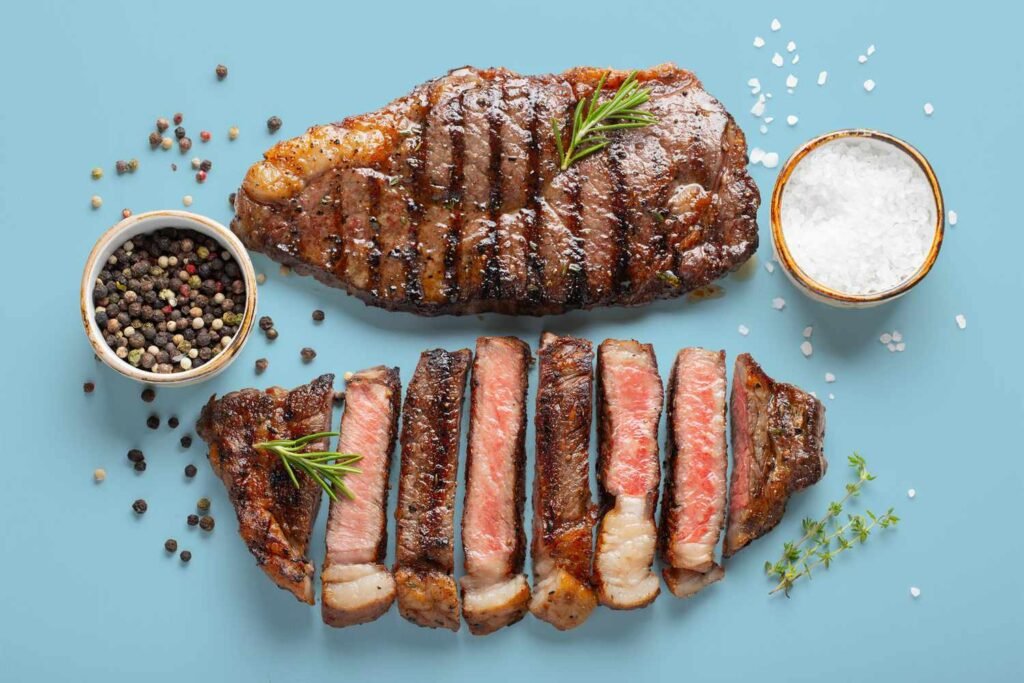
Grilling Times and Temperatures
Use a meat thermometer
To ensure you achieve the perfect level of doneness in your grilled meats, it’s highly recommended to use a meat thermometer. Different types of meat and cuts require specific internal temperatures to reach the desired doneness. Insert the meat thermometer into the thickest part of the meat away from bone or fat. This quick and accurate tool will take the guesswork out of grilling and give you consistent results every time.
Refer to grilling charts
Grilling charts are a great resource to have on hand, especially when cooking various types of meat. These charts provide guidelines on recommended cooking times and internal temperatures for different cuts. While grilling times can vary depending on the thickness of the meat and the heat of the grill, these charts serve as a reliable starting point. Make sure to adjust your cooking times based on the specific conditions of your grill and the desired level of doneness.
Rest the meat after grilling
After taking your perfectly grilled meat off the heat, it’s crucial to let it rest before slicing and serving. Resting allows the juices within the meat to redistribute, resulting in a more tender and flavorful end result. As a general rule, let the meat rest for about 5-10 minutes before cutting. This short resting period will ensure that each bite retains its juiciness, leaving you with a mouthwatering dining experience.
Flavor Enhancements
Add wood chips for smoky flavor
If you’re looking to add a smoky flavor to your grilled meats, consider using wood chips. Soaking the wood chips in water for about 30 minutes before grilling will produce a flavorful smoke when added to the grill. Different types of wood chips, such as mesquite, hickory, or applewood, will impart unique flavors to your meats. Experiment with different combinations to find your favorite smoky profile.
Use marinades and rubs
Marinades and rubs are excellent ways to impart flavor to your grilled meats. Marinades typically consist of a combination of oil, acid (such as citrus juice or vinegar), and seasonings. The meat soaks in the marinade for a period of time, allowing the flavors to penetrate and tenderize. Rubs, on the other hand, are dry mixtures of herbs, spices, salt, and sugar that are applied to the meat before grilling. Both methods have their benefits and can introduce a wide range of flavors to your dishes.
Baste with sauce during grilling
Basting your meats with sauce during the grilling process can add an extra layer of flavor. Whether you prefer a tangy barbecue sauce or a sweet glaze, basting helps to enhance the taste and create a caramelized exterior. It’s important to be mindful of the sugar content in the sauce, as excessive sugar can cause burning or charring. Apply the sauce towards the end of the grilling time to prevent it from burning and to allow it to adhere to the meat.
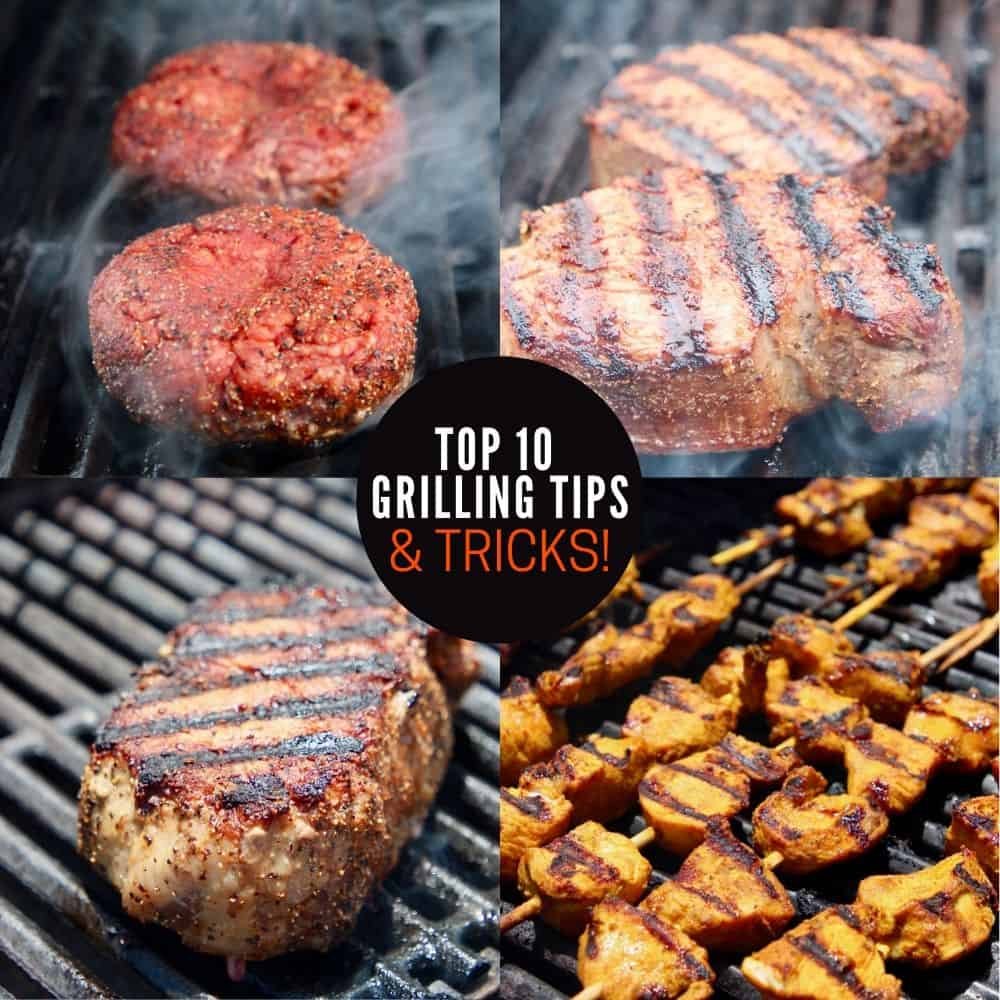
Grilling Tips for Specific Meats
Steaks: Sear first, then cook to desired doneness
When grilling steaks, the key is to achieve a flavorful sear on the outside while cooking it to the desired level of doneness. Start by searing the steaks over high heat for a couple of minutes on each side. Then, reduce the heat or move them to the indirect heat zone to finish cooking to your preferred temperature. Remember to use a meat thermometer to accurately measure the internal temperature and achieve your desired level of doneness.
Chicken: Cook with indirect heat to avoid dryness
Chicken is a versatile meat that can be grilled in various ways. To avoid dry chicken, it’s best to cook it using indirect heat. Place the chicken pieces on the indirect heat zone and close the grill lid. This method allows the chicken to cook more evenly without direct exposure to high temperatures, resulting in juicy and tender meat. If you prefer a crispy skin, you can finish off the chicken by searing it over direct heat for a few minutes.
Fish: Cook on a cedar plank for added flavor
Grilling fish can be a delicate process to ensure it doesn’t stick to the grates or fall apart. One excellent technique to enhance the flavor and prevent sticking is to cook fish on a cedar plank. Soak the plank in water for at least 30 minutes before grilling, then place the fish fillets directly onto the plank. The plank acts as a buffer, infusing the fish with a subtle smoky flavor. The result is a perfectly cooked fish with a gentle and delicious woody aroma.
Grilling Tools and Accessories
Quality grilling tools
Investing in high-quality grilling tools is essential for a successful grilling experience. Look for sturdy tongs, a spatula, and a grill brush. Long-handled tools are ideal for keeping your hands safe from the heat of the grill. Stainless steel tools are durable and easy to clean, making them a great option for any grill master.
Grill brushes and cleaners
Maintaining a clean grill is vital for food safety and optimum grilling performance. A grill brush with sturdy bristles is essential for regular cleaning. After preheating the grill, use the grill brush to scrape off any charred residue or stuck-on food. You can also use a specialized grill cleaner for deeper cleaning.
Grill baskets and skewers
Grill baskets and skewers are useful accessories for grilling vegetables, seafood, and smaller cuts of meat. Grill baskets keep smaller items from falling through the grill grates, allowing you to easily cook delicate or small ingredients. Skewers are perfect for creating kebabs or grilling vegetables. Look for skewers that are long and sturdy to hold your food securely.
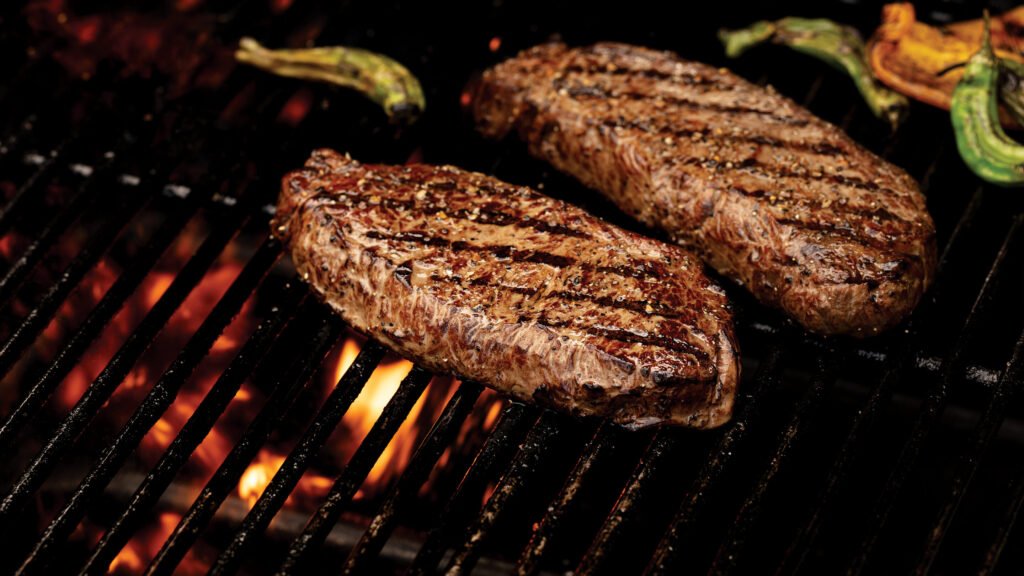
Safety Measures
Keep a fire extinguisher nearby
Safety should always be a top priority when grilling. Accidents can happen, so it’s crucial to have a fire extinguisher nearby in case of any flare-ups or unexpected fires. Familiarize yourself with how to use the fire extinguisher properly before beginning your grilling session. It’s better to be prepared and have peace of mind while cooking outdoors.
Use long-handled tools to avoid burns
Grilling involves high heat, so it’s essential to protect yourself from potential burns. Long-handled grilling tools, such as tongs and spatulas, will allow you to handle the food safely without your hands getting too close to the hot grill. Remember to always use oven mitts or heat-resistant gloves when necessary. By taking these precautions, you can enjoy grilling without risking any unnecessary injuries.
Clean and maintain the grill regularly
Regular cleaning and maintenance of your grill not only ensure better grilling performance but also reduce the risk of flare-ups and accidents. After each use, clean the grill grates and remove any residue or buildup. Regularly inspect the gas or charcoal components to ensure they are functioning properly. By keeping your grill clean and well-maintained, you’ll have a safer and more enjoyable grilling experience.
Mastering Grill Marks and Presentation
Preheat the grill grates for perfect sear marks
Achieving those coveted grill marks on your meat is not only visually appealing but also adds a delicious caramelized flavor. To ensure proper sear marks, preheat your clean grill grates for several minutes before placing the meat on. By preheating, the grates get hot enough to create the distinct sear marks when the meat comes into direct contact with them.
Rotate the meat halfway through cooking
To achieve even cooking and grill marks on both sides of your meat, it’s important to rotate the meat halfway through the cooking process. This ensures that each side is exposed to the direct heat and achieves the desired level of char and color. Use your tongs or spatula to gently flip and rotate the meat, allowing each side to cook evenly and develop grill marks.
Let the meat rest before slicing and serving
Once you’ve grilled your meat to perfection, resist the temptation to slice into it immediately. Allowing the meat to rest for a few minutes before carving and serving is essential for optimal juiciness and tenderness. Resting allows the muscle fibers to relax, enabling the flavorful juices to redistribute throughout the meat, resulting in a more flavorful and satisfying eating experience.
In conclusion, achieving perfectly grilled meats boils down to careful preparation, proper grilling techniques, and attention to detail. By considering the cut, selecting high-quality meat, and choosing the right thickness, you set the foundation for a delicious result. Preheating the grill, using the appropriate heat source, and following grilling times and temperatures ensure precise cooking. Flavor enhancements, grilling tips for specific meats, and utilizing the necessary tools all contribute to creating a memorable grilling experience. Remember to prioritize safety measures, master grill marks and presentation, and let the meat rest before serving. With these expert tips and techniques, you’ll soon become a grill master capable of impressing friends and family with perfectly grilled meats every time. Happy grilling!
